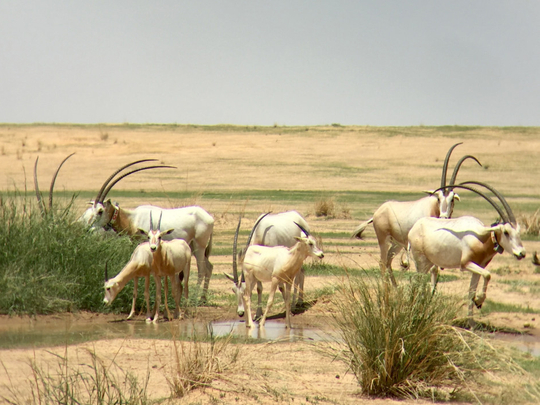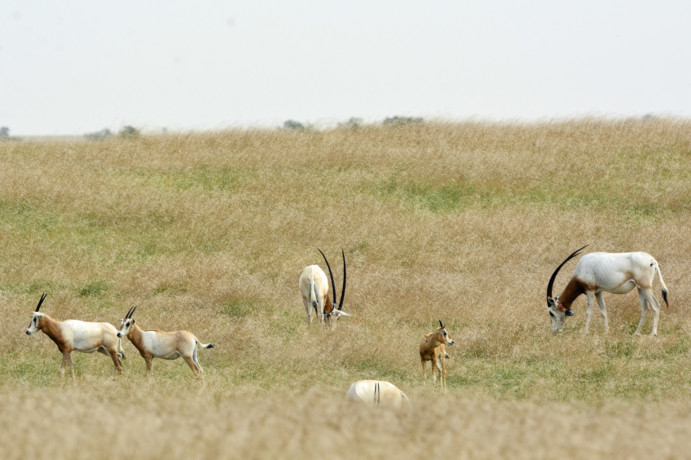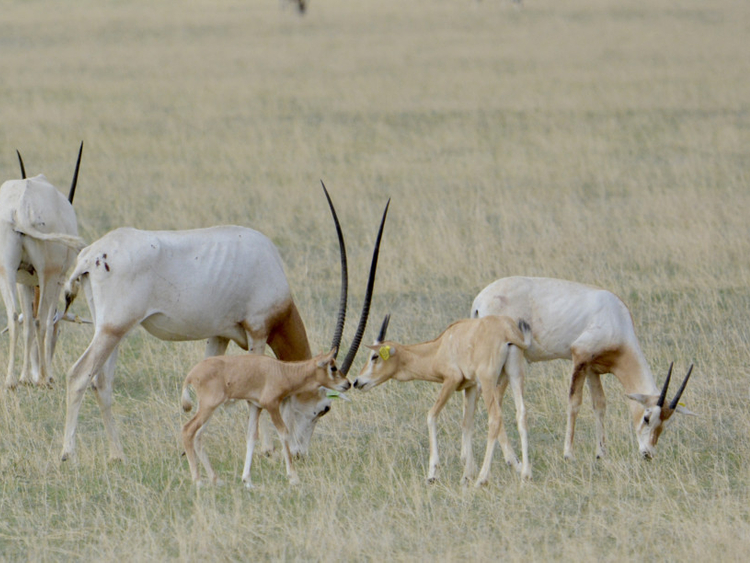
Abu Dhabi: The Sahelian plains of Chad have welcomed 40 Scimitar-horned oryx calves in 2018, which were born as part of an Abu Dhabi-sponsored programme.
The birth of the new babies brings the total herd to 180 animals under the Scimitar-horned Oryx Reintroduction Programme, which is being led by the Environment Agency-Abu Dhabi (EAD), in collaboration with the government of Chad and the Sahara Conservation Fund (SCF).
The programme not only succeeded in returning this once extinct-in-the-wild species to the Ouadi Rimé-Ouadi Achim Game Reserve in Chad, but also aims to ensure that the oryx thrive in their new surroundings, said an EAD press release issued on Wednesday.
It is the first time the species has been repatriated to an unfenced area and its goal is to establish and maintain a healthy, self-sustaining herd of over 500 animals over a five-year period, which will continue to grow and adapt in the wild as the years go by.
It is believed that the last Scimitar-horned Oryx disappeared from Chad in the late 1980s. The International Union for the Conservation of Nature (IUCN) officially declared the species globally “extinct in the wild” in 2000, with the only surviving animals persisting in captivity in breeding programmes in zoos and private collections across the world.
Razan Khalifa Al Mubarak, EAD’s Secretary General, said: “The reintroduction of the Scimitar-horned Oryx into Chad has been described by many as the world’s most ambitious large mammal reintroduction programme. To see this initiative taking shape from a dream to a vision, a strategy and then a reality has to be one of the most gratifying experiences that anyone who is passionate about wildlife conservation could wish for,” she said.
Another significant milestone in the programme was the recent release of a further 83 Scimitar-horned Oryx into the wild in Chad at the end of July. The animals selected for the reintroduction came from the ‘world herd’ that EAD has been curating at its breeding facility in Delaija, Abu Dhabi. Many of the animals that make up the ‘world herd’ were donated to the EAD from the collection of the late Shaikh Zayed Bin Sultan Al Nahyan. The genetic diversity of the bloodstock was increased with the addition of animals that were donated from a number of zoos and private collectors across the globe.
A very careful selection process took place at the Delaija facility whereby animals were carefully tested, and prepared for shipment to the pre-release facility within the protected area in Chad. After release, the wild herds continue to be protected by wildlife rangers of the Government of Chad’s Ministry of Environment and Fisheries. In addition, EAD continues to work closely with the Smithsonian Conservation Biology Institute (SCBI) and Zoological Society of London to carefully monitor the daily movements of the animals in the wild with the aid of satellite collars.














